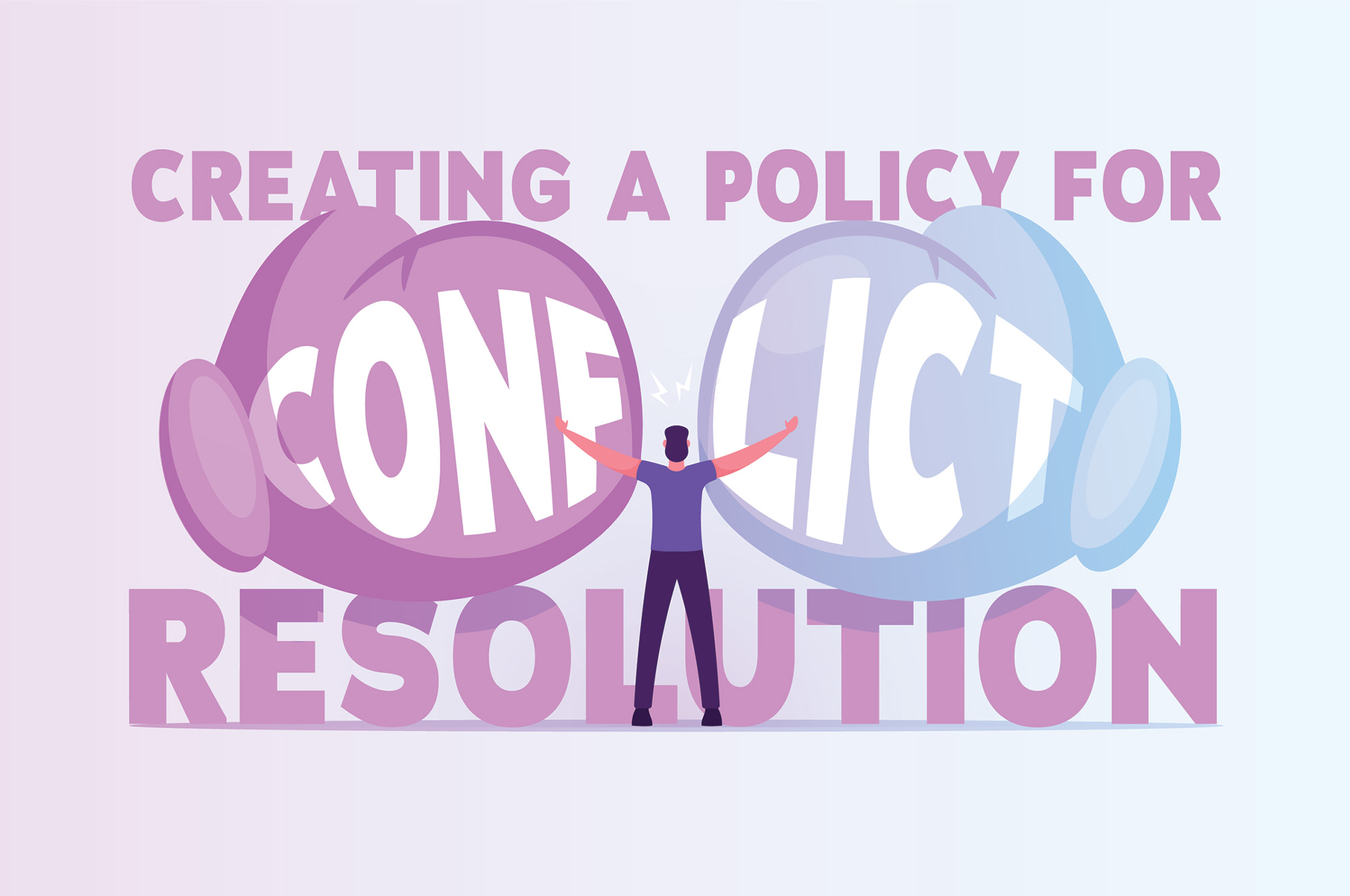
by Louise Dunn
 onflict happens…even in the best of teams. The problem is not necessarily conflict itself but rather how conflict is handled. To make the process easier, team training sessions should be conducted about conflict and communication techniques, and a roadmap (aka conflict resolution procedure) should be provided for the team to follow.
onflict happens…even in the best of teams. The problem is not necessarily conflict itself but rather how conflict is handled. To make the process easier, team training sessions should be conducted about conflict and communication techniques, and a roadmap (aka conflict resolution procedure) should be provided for the team to follow.Conflict has many sources, including the following:
- Dispute about inequities or preferential treatment
- Competition for resources or battle for supremacy
- Unfilled expectations
- Different personalities or attitudes
- Different goals or priorities, or different methods to achieve goals
- Resistance to change
- Unclear job expectations
- Poor communication
- Poor work habits
- Toxic work environment
- Personal problems
- Differences in perceptions and values (e.g., upbringing, culture, education, socio-economic class, previous experiences, etc.)
The extent of the list varies with the scope of one’s internet search. However, discussing a list of conflict sources can help the team when a conflict arises. Often, the nature of the problem is not even considered; instead, people fall into nine common responses that only escalate the level of conflict:1
- Enter into combat mentality (want to see a winner and a loser).
- Oversimplify the problem (because it is too difficult to tackle several issues at once).
- Lack of respect (lack of respect for the other person and perhaps even yourself).
- Lash out or shut down (respond aggressively or rush to smooth things over).
- Thwarting ploys (threats, stonewalling, sarcasm, silent treatment, etc.)
- Hooked and sucked into conflict (found your weak spot, where you are vulnerable and lose control).
- Rehearse a script (play it out in your mind, don’t listen and just recite the rehearsed script).
- Make assumptions about intentions (assume the other person has ill intentions).
- Lose sight of the goal (winning the argument is not the goal; you must have clear, realistic outcomes).
Any of the nine listed responses are not part of an appropriate treatment plan for the conflict and will only make the condition worse. When the cause of the conflict is considered, moving to the next stage of communicating through the problematic situation becomes more manageable.
To quote author Stephen Covey, “Seek first to understand and then to be understood.” Communicating through conflict does not mean speak loudly and have the last word. Educating the team on conflict communication tools gives them what they need to address it instead of avoiding it or escalating it. Give the team a few scenarios and let them explore responses using the following tools:2,3
- Use “I” instead of “You” to express your feelings (“I understand…,” “I feel…,” “I want…,” etc.)
- Pay attention to body language since 55% of communication is body language (7% is words, 38% is tone of voice).
- Ask questions trying to understand the other person, including how to improve the situation.
- Define the problem; do not assume intentions.
- Create a follow-up plan.
- Validate their feelings (“I’m sorry this hurt you.”)
- Explain the consequences and the benefits of the actions taken.
- Explain how the actions conflict with your values or are hurting you or others.
Giving the team a few communication tools empowers them to first discuss the conflict before going to management to handle everything. This brings up another essential tool: following a process of dealing with conflict, when to involve management and what steps can be taken to move through a resolution process. One document to use is a Conflict Resolution Policy that outlines the process:
- Manager meets with both parties involved in the conflict. (Set the ground rules, each person completes the standard complaint form and summarizes his/her point of view.)
- Clarify the disagreement and conflicting views (reflect, reframe and listen).
- Describe specific actions each party would like to see the other party take to resolve the differences. (Stop doing, start doing, do more of, do less of, etc.)
- Get a commitment to making changes and monitor follow-through.
Other formal policies to create are Anti-harassment and Complaint Procedure, and Code of Ethics and Business Conduct. For a complaint procedure, steps should include:
- Outline the steps to go through the process (as noted above).
- Include the standard complaint form.
- Have a statement about guaranteeing protection from being retaliated against.
- Be specific about time frames for processing (e.g., acknowledging complaints within three days of it being filed).
Having procedures in place may curtail aimless complaining or griping because it shows that management takes complaints seriously. It will also ensure consistent and fair handling of all complaints.
Conflict has a reputation for being negative—impacting productivity, morale and the wellbeing of pets being cared for. Having a procedure for conflict resolution can help nip negativity in its early stages. It can also turn it into a positive experience by managing the discussion and working toward a resolution. Put the tools in place to effectively handle situations and turn negative conflict into positive growth.
References:
- Faludi, O. (2014, July 9). Difficult Conversations: 9 Common Mistakes. https://www.linkedin.com/pulse/20140710032505-55905022-difficult-conversations-9-common-mistakes/
- Miller, E. Creating a Conflict-Management Plan. Systems Thinker. https://thesystemsthinker.com/creating-a-conflict-management-plan/
- Strategies for Managing Conflict – Communication Tools. https://www.vistacampus.gov/strategies-managing-conflict-communication-tools

